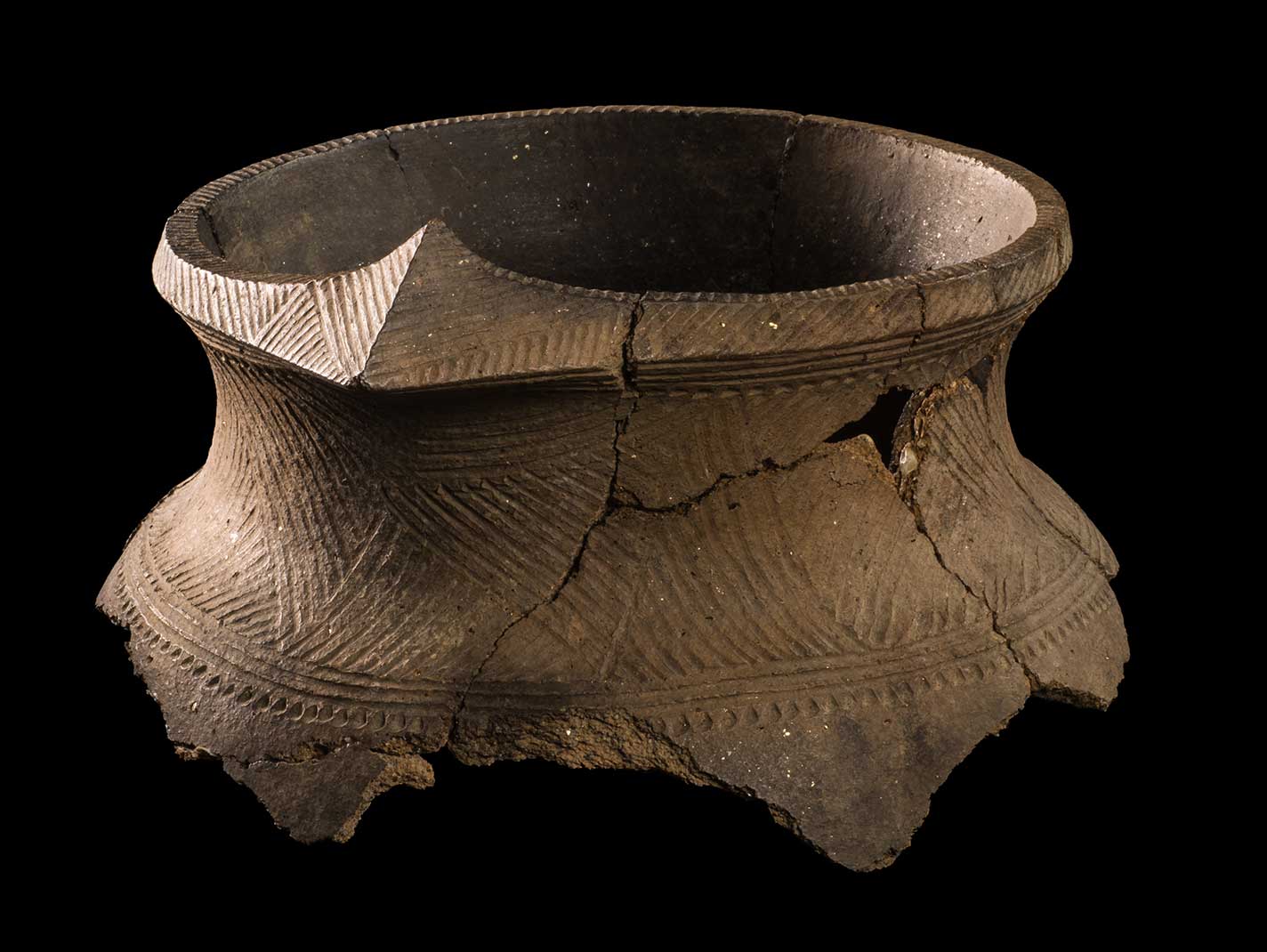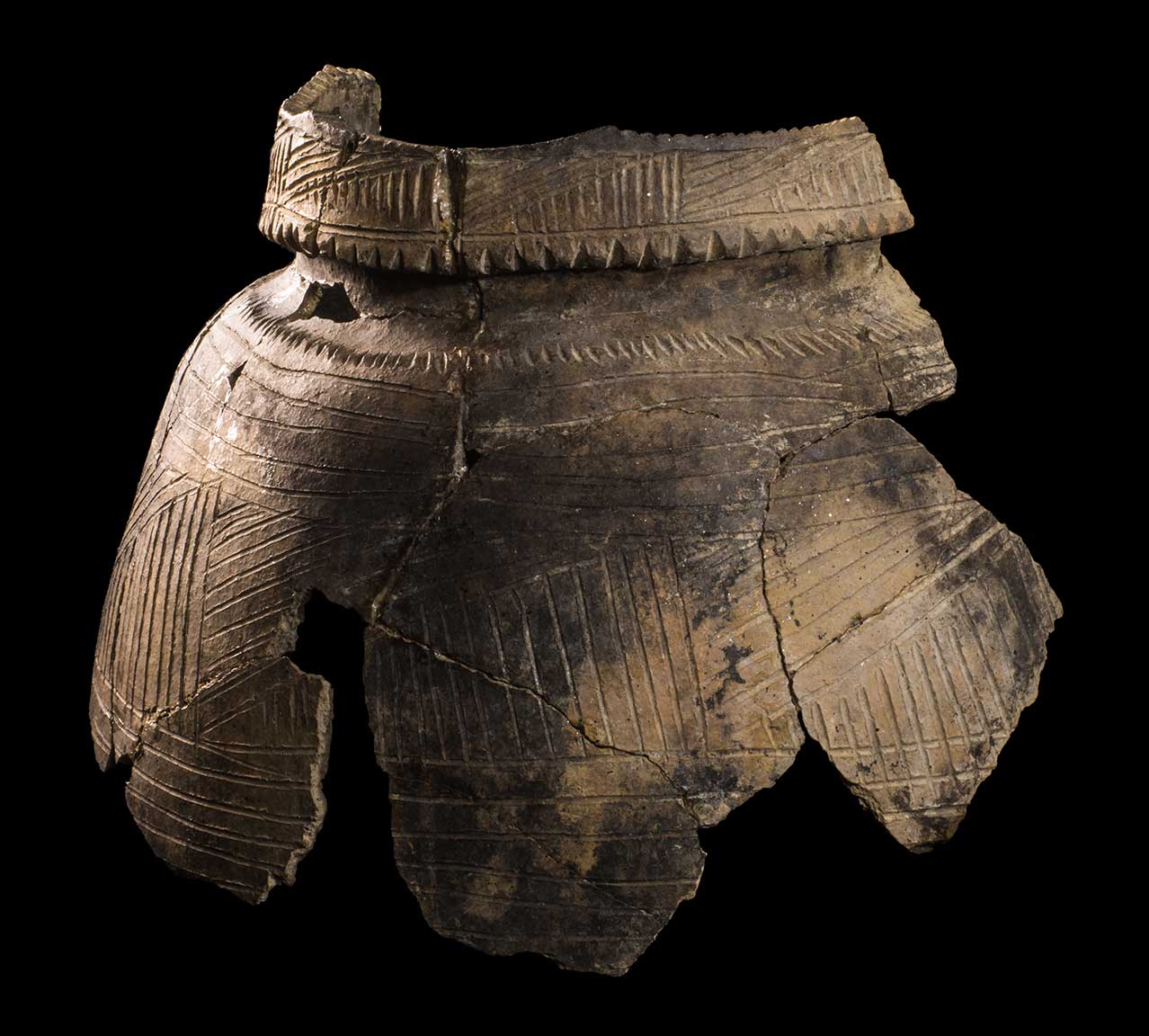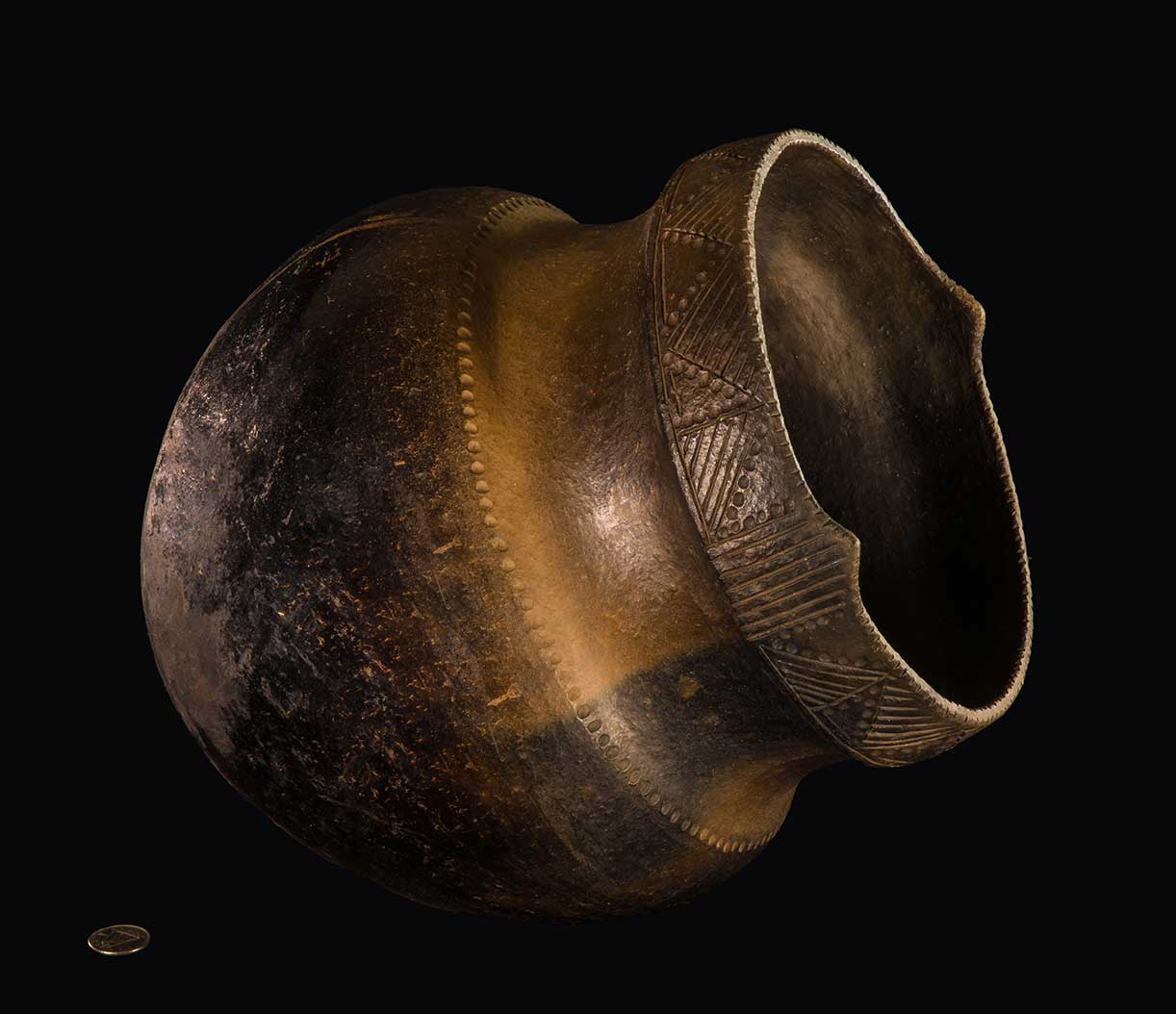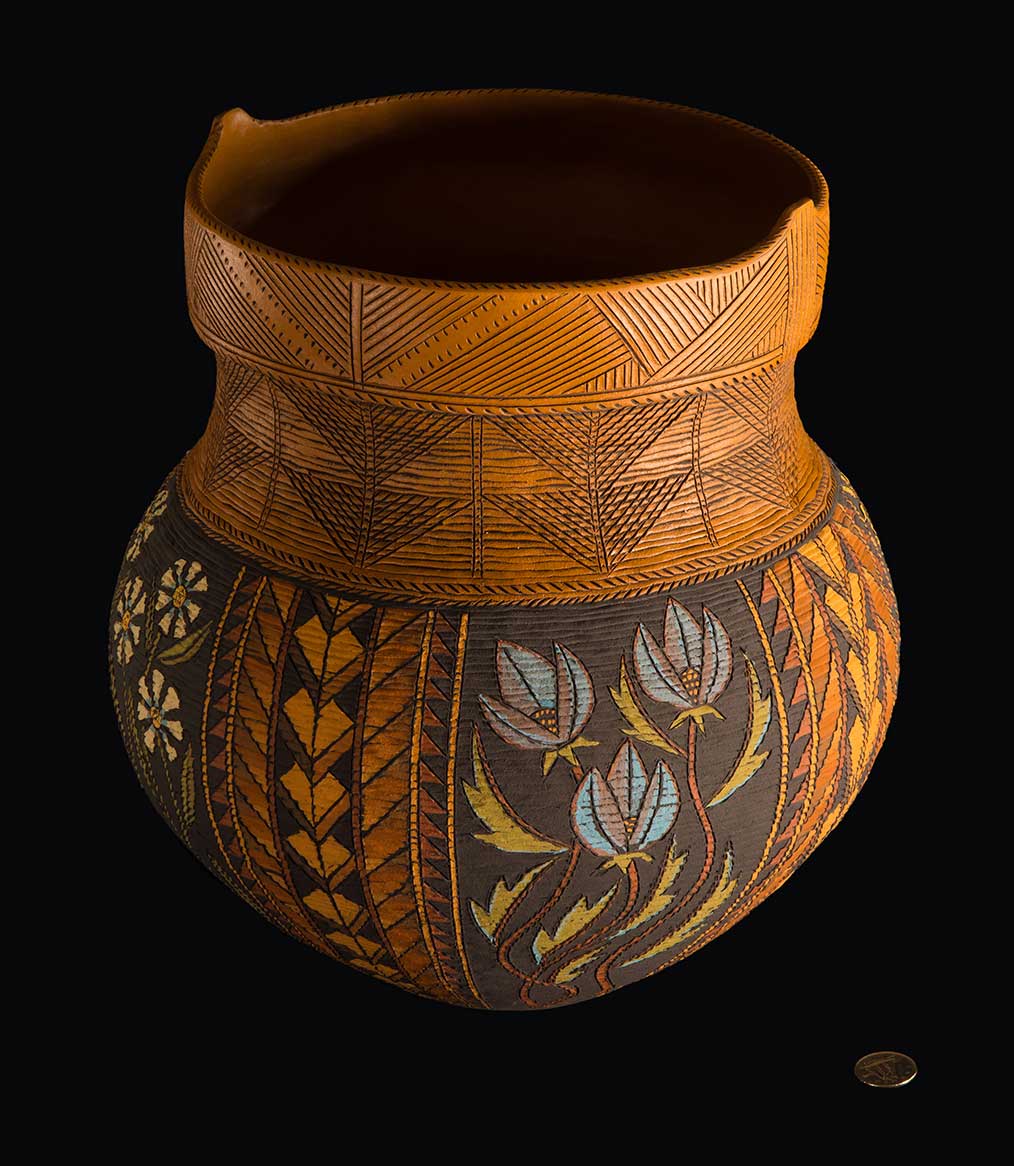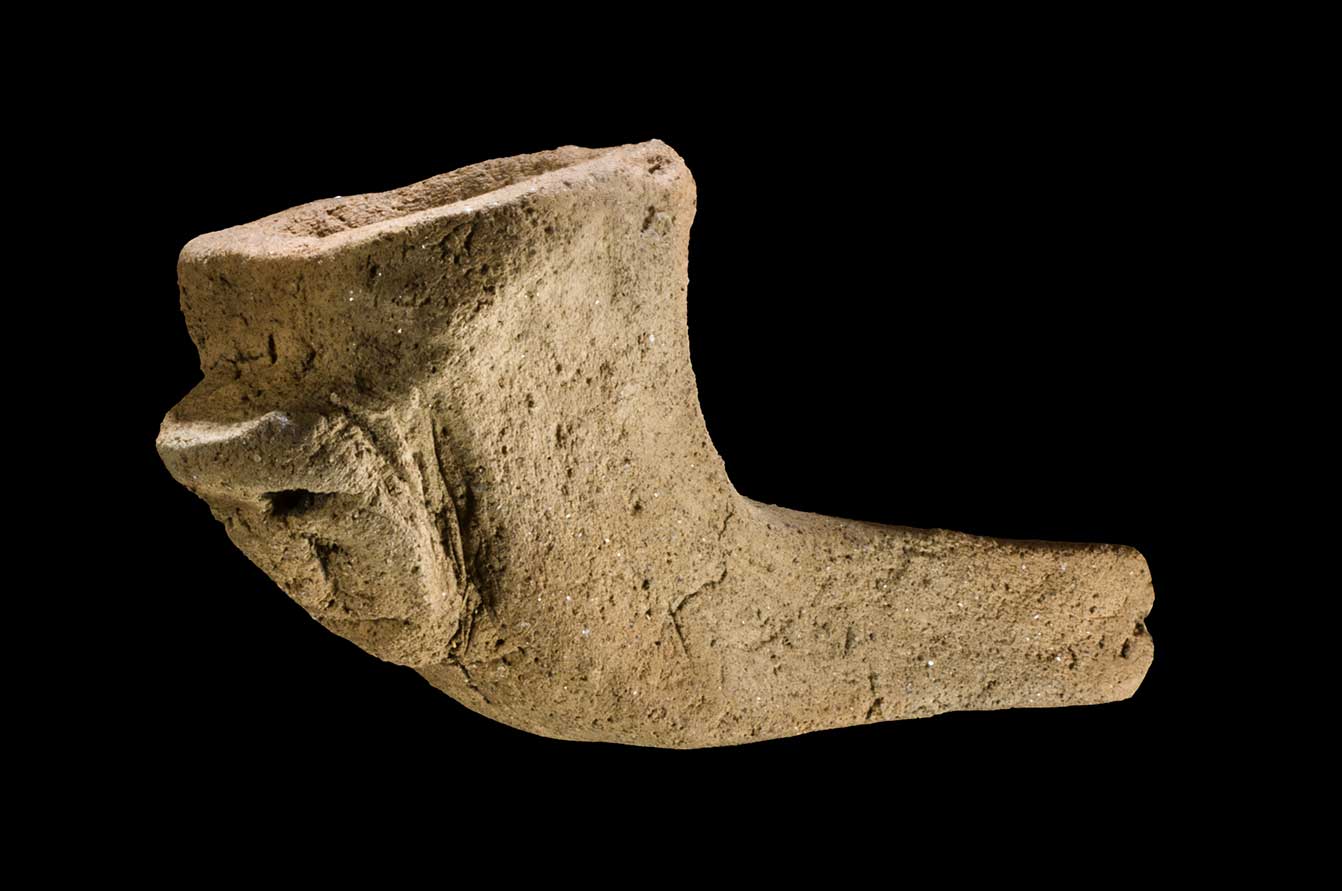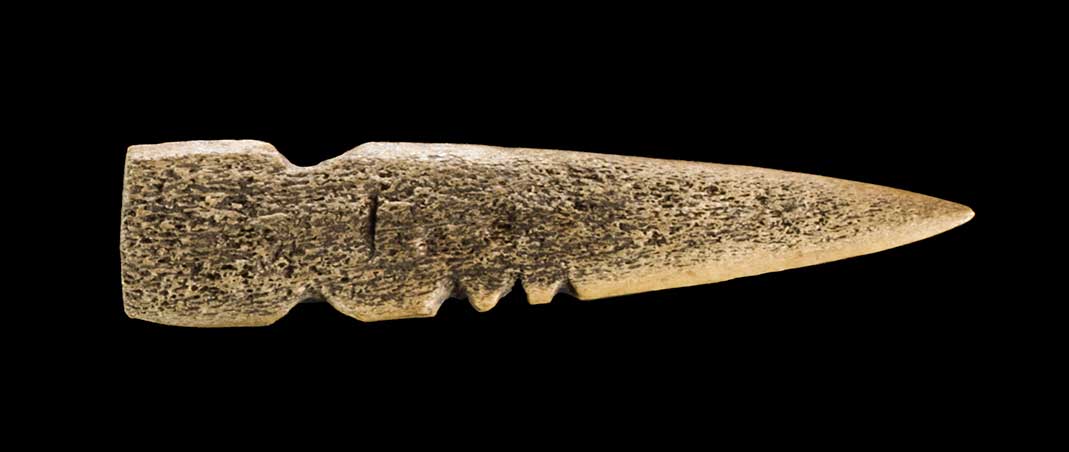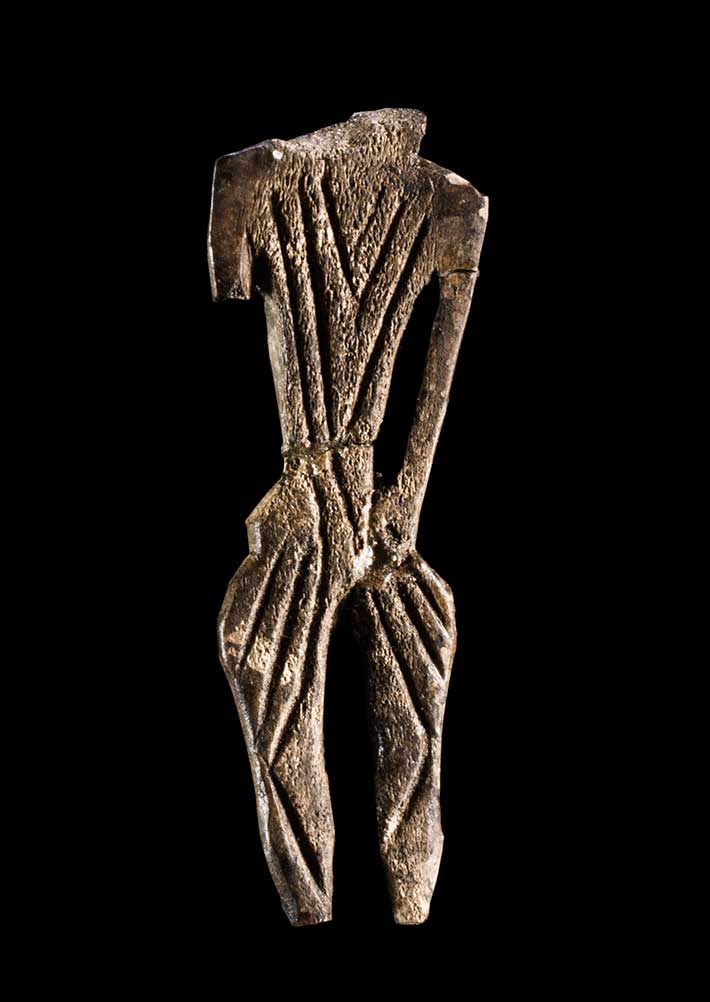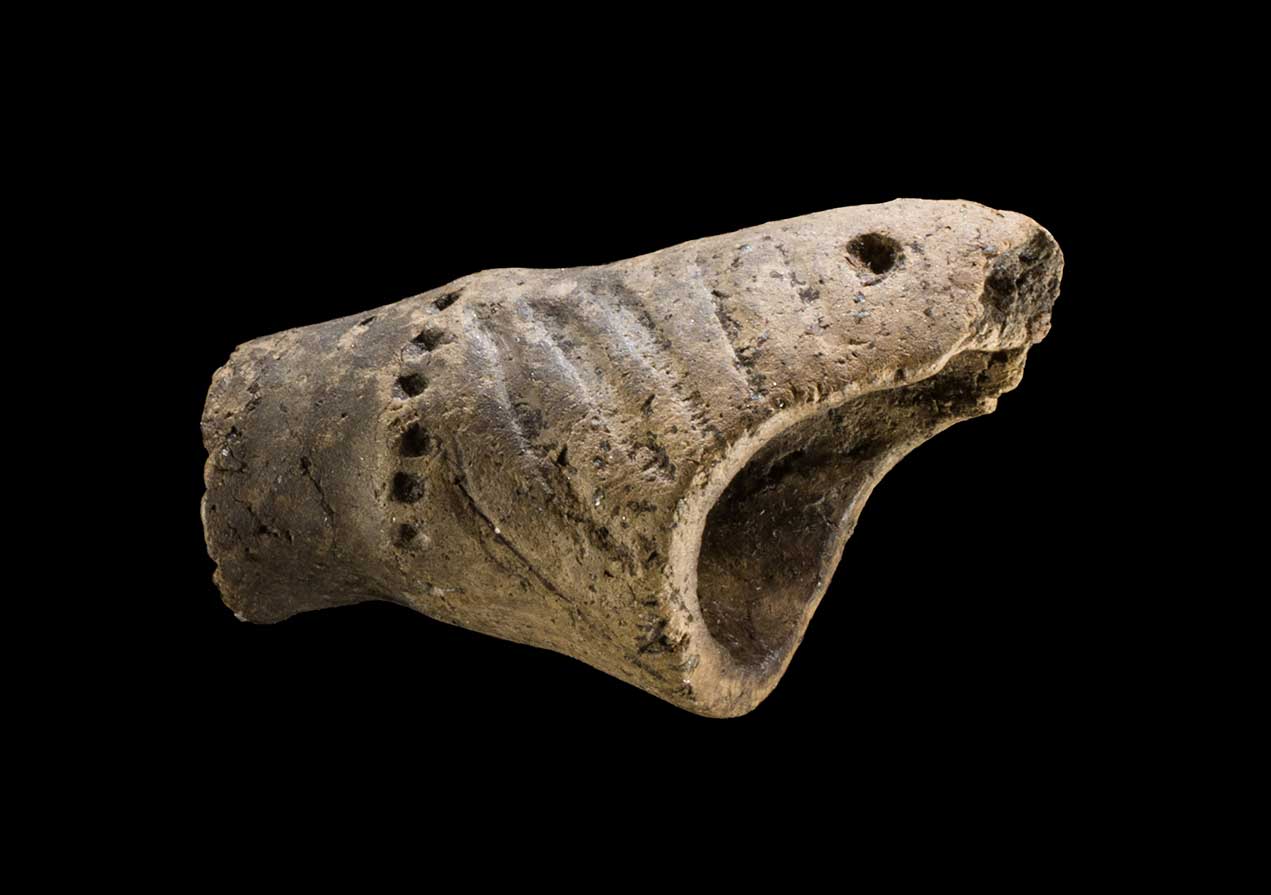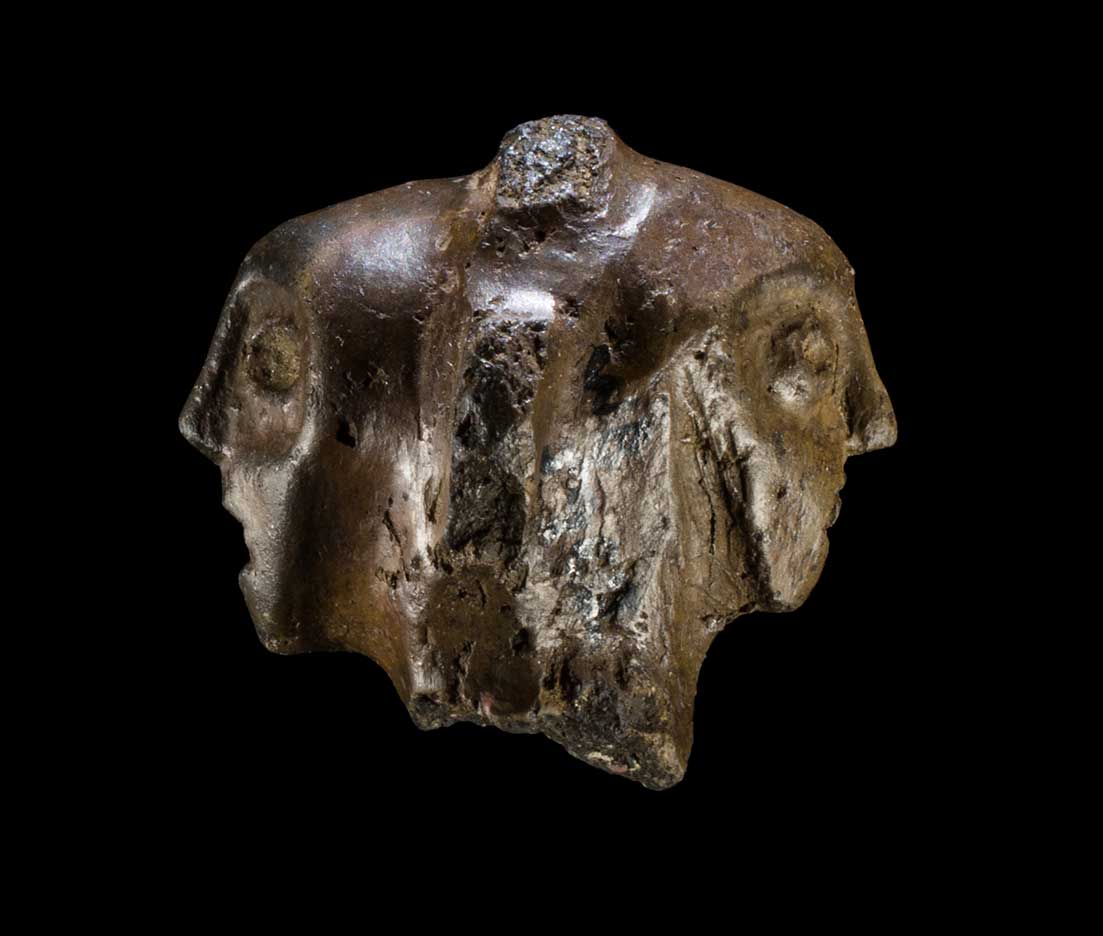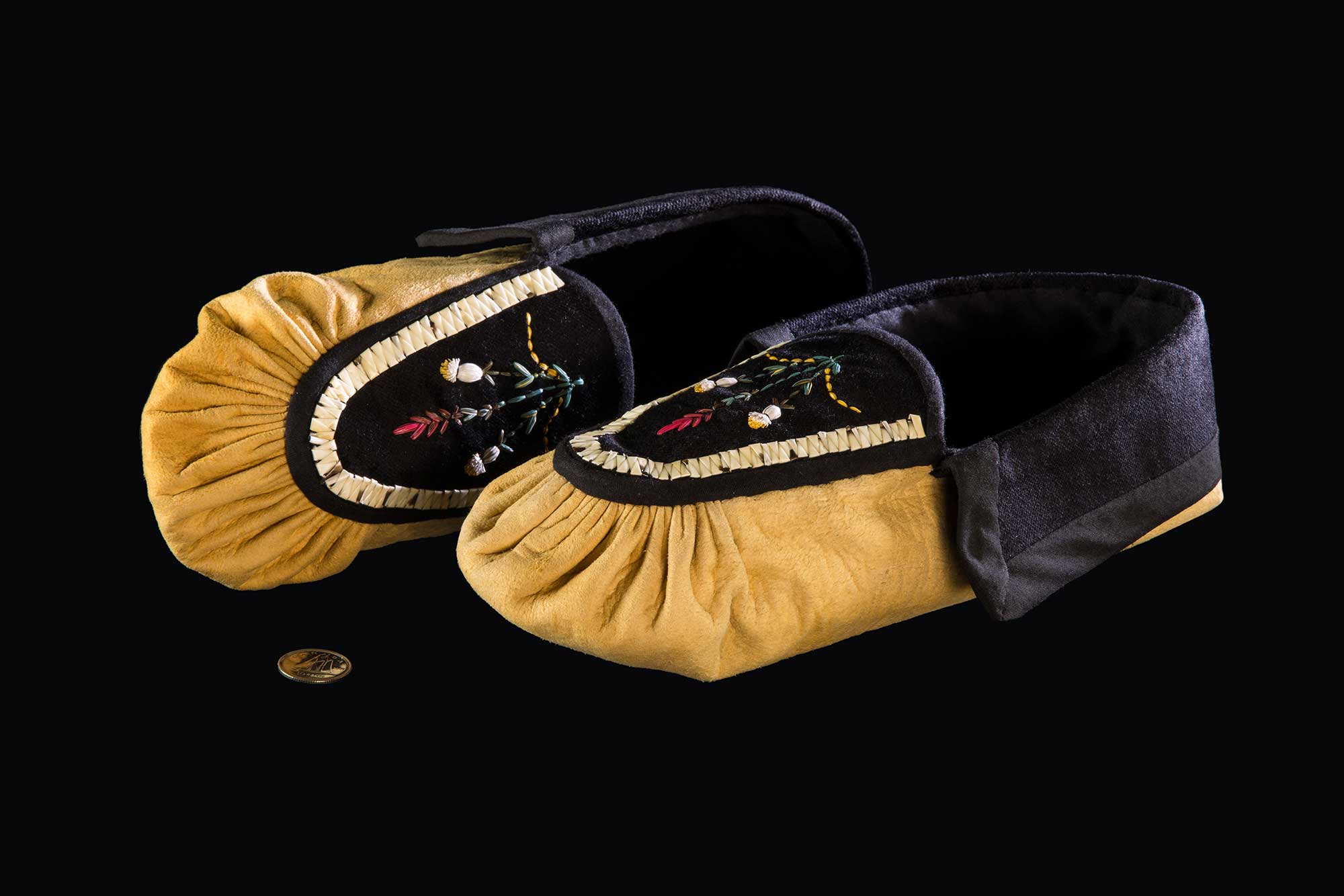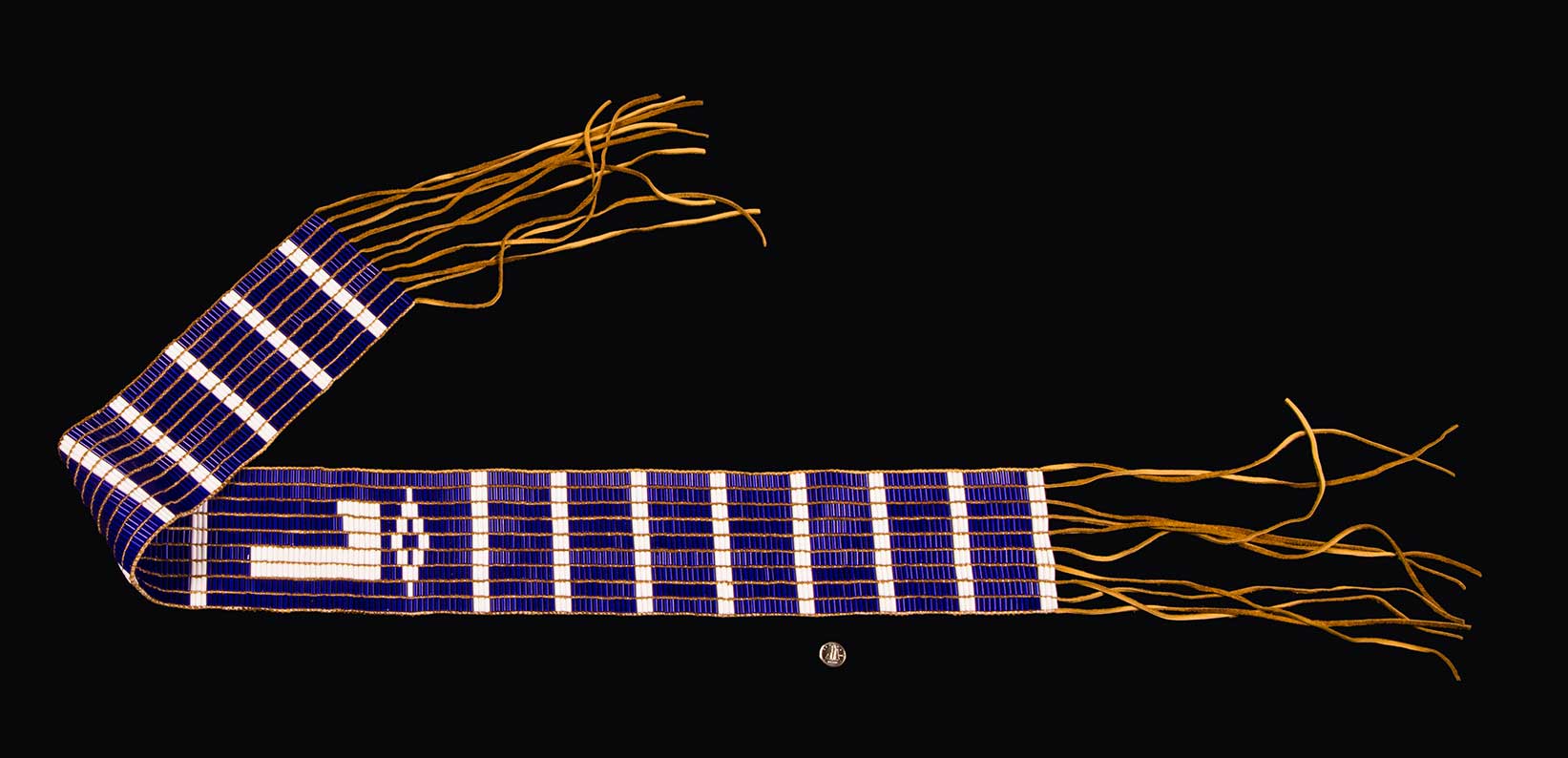Ontario Hurons of the 1600, by Ivan Kocsis. COURTESY OF ARCHAEOLOGICAL SERVICES INC.
SECOND LANDING
Huron-Wendat
What You’ll Learn in this Section
The Huron-Wendat were the northernmost Iroquoian language speakers, who in the seventeenth century inhabited the area between Lake Simcoe and Georgian Bay, known historically as Wendake. Faced with declining populations due to epidemic diseases and warfare, losing nearly 60 percent of their citizens, the Huron-Wendat in the mid-seventeenth century could no longer defend themselves in their homelands. They needed political, economic, and military support so they turned to their French allies and the Anishinaabek for help. They relocated to new settlements seeking shelter and protection. As a result, there is a strong vibrant Huron-Wendat community today in Québec.
The Huron-Wendat were forced to move constantly due to diminishing soil fertility, dwindling supplies of firewood, as well as managing considerable quantities of organic refuse. Such moves involved the clearing of new forests, preparing agricultural fields, felling of thousands of saplings and cutting of hundreds of sheets of elm and cedar bark to construct dozens of houses and palisades.
The houses of the Huron-Wendat were an ingenious design partly due to the varying length. Their longhouses varied with the size of the family, each housing a mother and her daughters, or a group of sisters, along with their husbands and children. Families shared each of the hearths that were situated along the central corridor of the structure walls, with holes in the roof that allowed smoke from the hearth fires to escape.
The “Three Sisters” are crops of corn, beans, and squash. The Huron-Wendat grew these three crops along with others such as sunflower and tobacco. The Three Sisters were grown together in small mounds as complementary crops, using a companion or intercropping strategy. It’s ingenious because of the way the three plants provide a microclimate and structural and nutritional support for each other. Planting these together starting long ago reveals the deep knowledge of the environment held by Indigenous people.
Farmers to the South
The Huron, or Wendat, were the northernmost Iroquoian language speakers who, in the seventeenth century, inhabited the area between Lake Simcoe and Georgian Bay known historically as Wendake. Their confederacy consisted of four allied nations: the Attignawantan (Bear), Attigneenongnahac (Cord), Arendarhonon (Rock), and Tahontaenrat (Deer). Another population, known as the Ataronchronon (Bog), appear to have been a division of the Attignawantan. Their name for themselves, Wendat, has been interpreted as meaning “islanders” or “dwellers on a peninsula.” Today, the current Huron-Wendat Nation within Canada is situated north of Québec City, and is also known as Wendake. In the United States, there are people of Wendat and mixed descent in Anderton, Oklahoma, and Kansas.
Reconstruction of Huron-Wendat longhouses. COURTESY RON WILLIAMSON.
Territories of the Huron-Wendat Nation

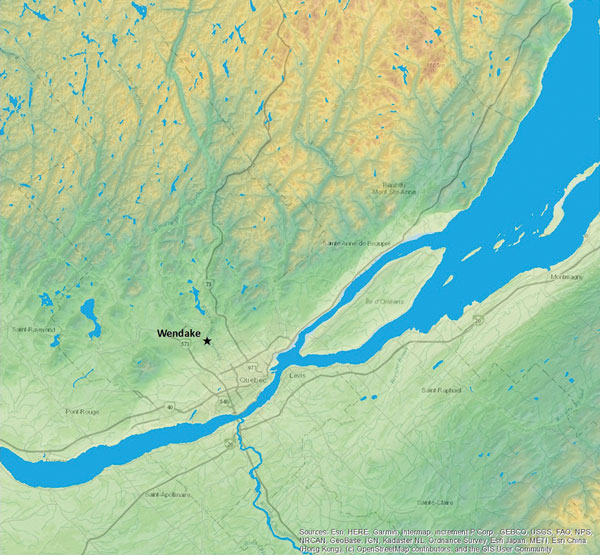
LEFT: Map showing the locations of Wendat nations and villages in the early seventeenth century. The Huron-Wendat endonyms for their various nations include Hatindiawanten (Attignawantan – Bear), Hatingënnoniahahk (Attigneenougnahac – Cord), Yärendahrönon (Arendarhonon – Rock), and Tahonhtayenrat (Tahontaenrat – Deer). COURTESY RON WILLIAMSON. RIGHT: Present territory of the Huron-Wendat Nation. © HURON-WENDAT NATION. COURTESY HURON-WENDAT NATION AND OFFICE OF NIONWENTÏO.
While over 20,000 Huron-Wendat people lived in villages throughout old Wendake, they hunted and fished farther afield in both the Trent Valley to the east and throughout Muskoka. Their route to trade with Europeans in the St. Lawrence Valley via the French River and Lake Nipissing took them along the coast of Georgian Bay. They interacted and traded with Anishinaabek groups in Muskoka and further north.
Faced with declining populations due to epidemic diseases and warfare with the Haudenosaunee, losing nearly sixty percent of their citizens, the Huron-Wendat in the mid-seventeenth century were faced with a dilemma. They could no longer defend themselves in their homelands. They needed political, economic, and military support so they turned to their French allies and the Anishinaabek for help. They relocated to new settlements seeking shelter and protection. As a result, there is a strong vibrant Wendat community today in Québec.
Illustration of a Huron-Wendat Village, by Ivan Kocsis. COURTESY RON WILLIAMSON.
Planning the Community (and the Next One)
The Wendat inhabited large, sometimes fortified villages situated near a source of fresh water. Because of constantly diminishing soil fertility, dwindling supplies of firewood, as well as managing considerable quantities of organic refuse, these villages were only occupied for a decade or so. Planning for their next communities thus began years before abandoning the ones in which they lived. Such moves involved the clearing of new forests, preparing agricultural fields, felling of tens of thousand of saplings, and cutting of hundreds of sheets of elm and cedar bark to construct dozens of houses and a palisade. All the while, the current community had to be maintained.
The length of the longhouses in which the Wendat lived varied with the size of the family, each housing a mother and her daughters, or a group of sisters, along with their husbands and children. Two families shared each of the hearths that were situated along the central corridor of the structure walls, with holes in the roof that allowed smoke from the hearth fires to escape.
Navigating Ancestral Landscapes
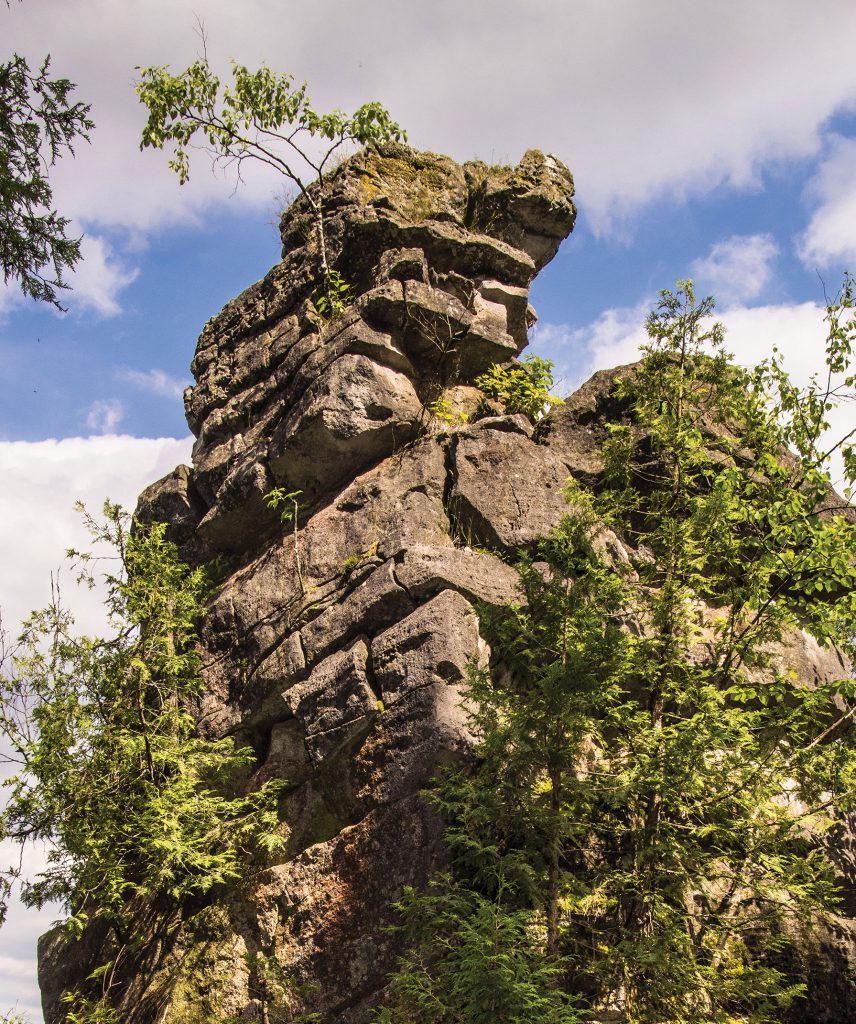
While the Huron-Wendat are not known to have created stone pictographs or petroglyphs, distinctive rocks in the landscape link directly with their cosmology. Every individual has two souls, one of whom makes the journey to the sky world. That passage was through a mixture of identifiable landscape features and mythological figures. The journey was dangerous. It involved passing by a 16-metre-tall standing rock (Ekarenniondi), located near present-day Collingwood, Ontario where a spirit named Pierce-head would draw the brains out of the heads of the dead to differentiate the living and the dead within a shared landscape.
Ekarenniondi (Standing rock). PHOTO ©2022 MARKZELINSKI.COM FROM THE BOOK NIAGARA ESCARPMENT: LAND BETWEEN WATERS.

LISTEN TO OUR STORIES
Ron Williamson, Archaeologist, on the history of the Wendat people in Ontario. (Length: 1:35)
The Necessities of Life
The Wendat grew corn, beans, and squash (the “Three Sisters”) as well as sunflower and tobacco. They also harvested wild plant foods, fished, and hunted. In the seventeenth century, over fifty percent of an individual’s diet, was corn, measured from the chemical signature the plant left in Huron-Wendat teeth. Large communities were surrounded by hundreds of acres of cornfields. The Three Sisters were grown together in small mounds. The Wendat were the first true farmers of the north and have been nominated recently for a national planning award for achieving an outstanding system of agricultural fields along the north shore of Lake Ontario and in historic Wendake.
The Huron-Wendat were described by the early Europeans as “the granary of the north” meaning that the Wendat always grew enough corn to feed themselves, to provide in case of crop failure due to drought, but also to trade with Anishinaabek peoples to the north for hides. Some people from the northern Anishinaabek nations wintered in Huron-Wendat villages.

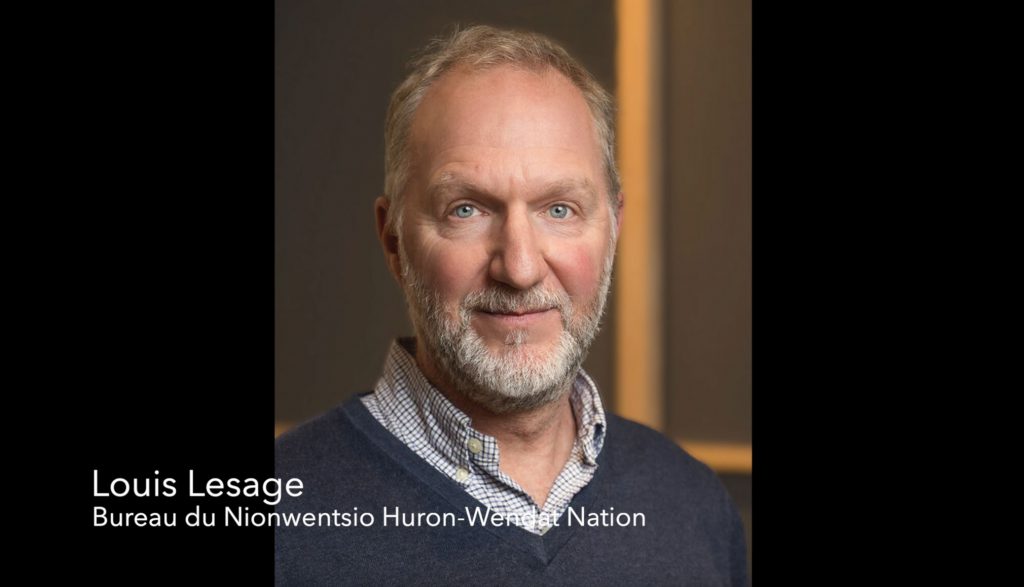
LISTEN TO OUR STORIES
Louis Lesage, Huron-Wendat Nation, describes the community of Wendake and its values. (Length: 1:40)
Make a Match!
Companion plants are fruits and vegetables that help each other grow when planted side-by-side. The Huron-Wendat use companion planting with the Three Sisters to grow crops more efficiently. Match these plants correctly to learn which crops can be planted together to help your at-home garden thrive!
ICONIC OBJECTS GALLERY
Explore objects that reflect Misko-Aki’s ancient Indigenous history.
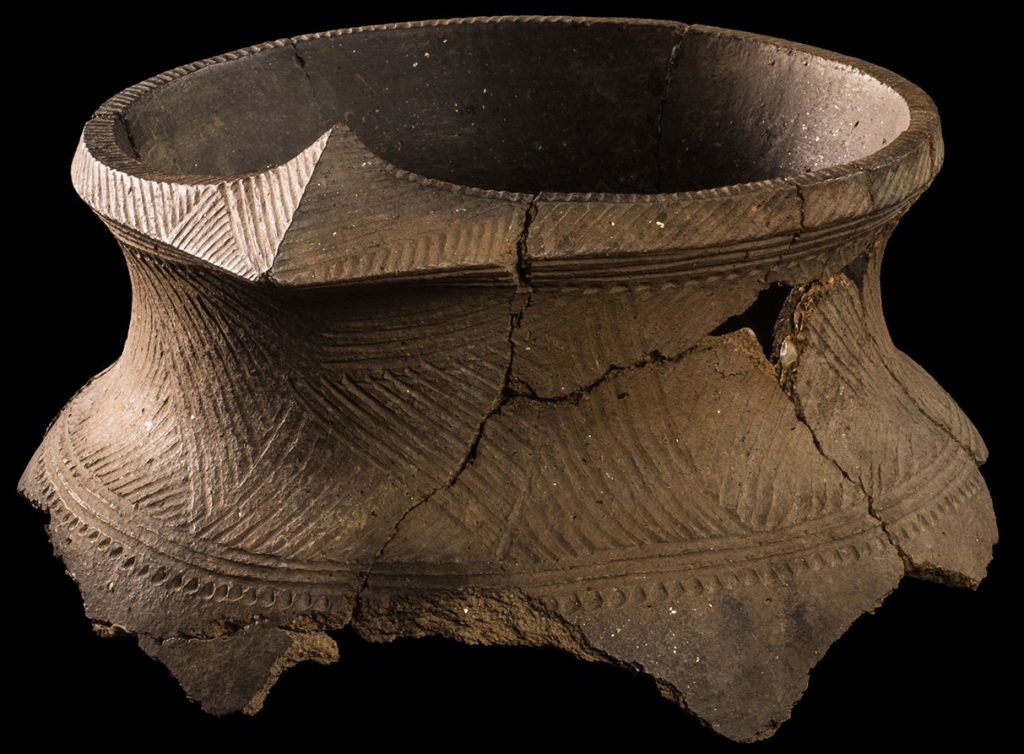

LISTEN TO OUR STORIES
Richard Zane Smith demonstrates methods used to make a traditional Wendat clay pot. (Length: 14:41)

7 GRANDFATHER TEACHINGS
BRAVERY (THE WARRIOR)
The Huron-Wendat communities in the early seventeenth century faced extraordinary pressures from European disease, Jesuit disruptions, and an ongoing war with the Haudenosaunee. After attempting to attack the Mohawks in 1609, bolstered by a new alliance with French and Algonquin allies, the Huron-Wendat suffered a retaliation that was so fierce, they were forced to abandon their homelands and resettle. The courage, intelligence, and fortitude of their leaders and people allowed the Huron-Wendat to survive the onslaught. Despite becoming more scattered and much reduced in population, the bravery shown by the Huron-Wendat is much to be admired
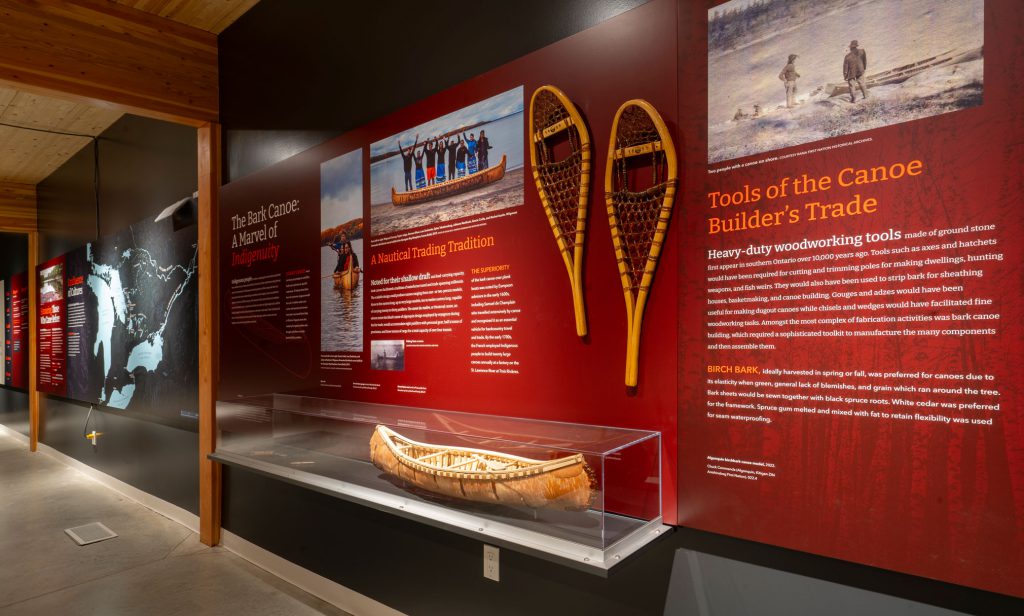
Are You Ready to Experience Misko-Aki in Person?
Visit the Muskoka Discovery Centre to explore Misko-Aki as well as our many other immersive exhibits, programs and activites.
Purchase Tickets
